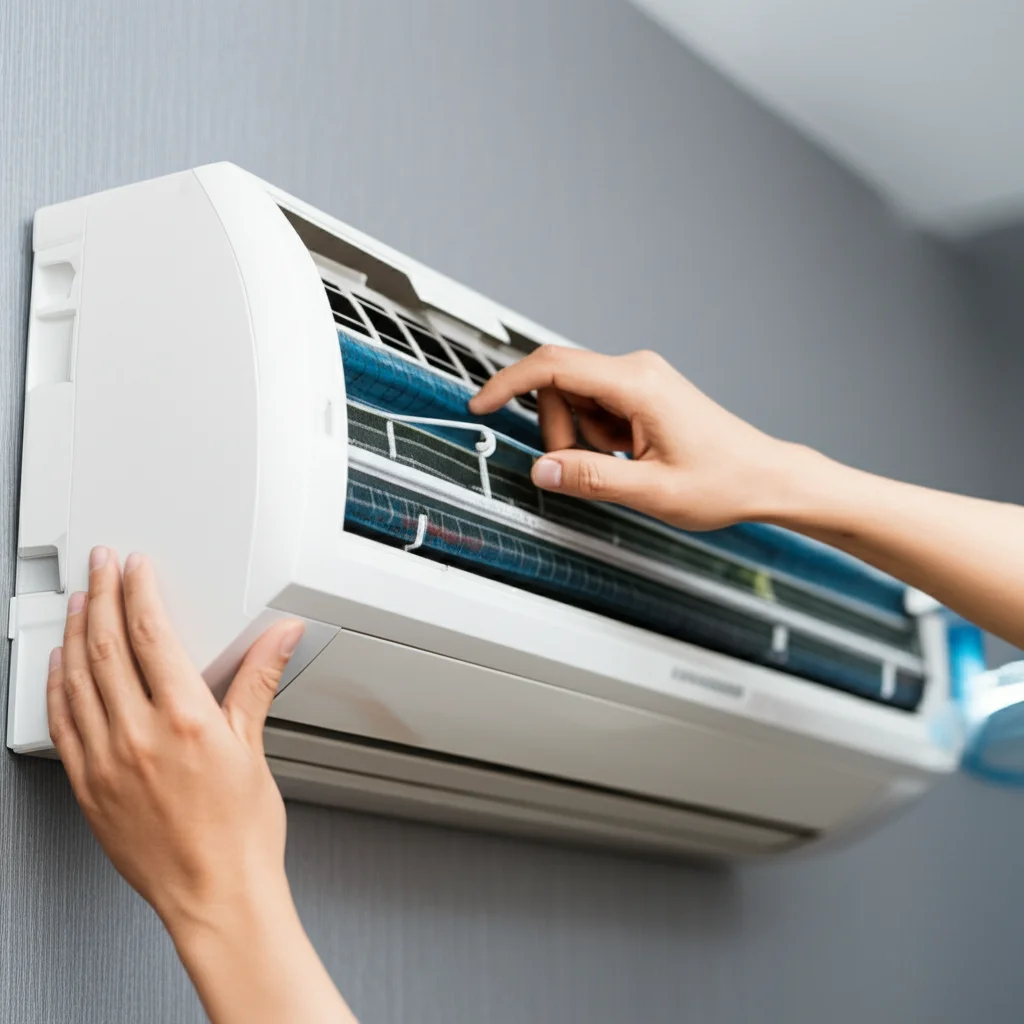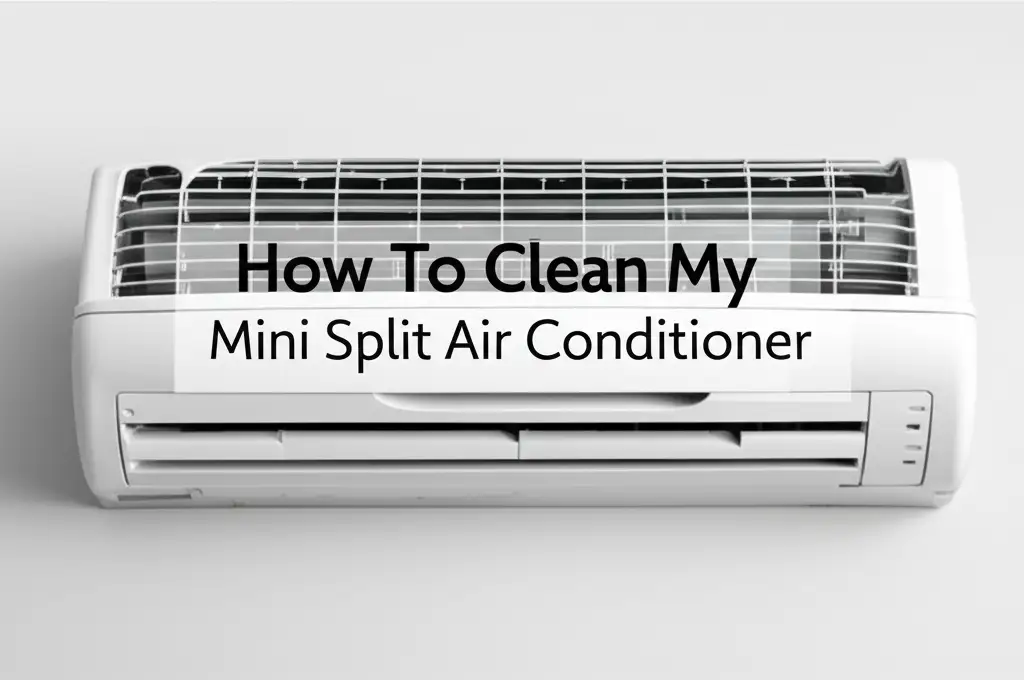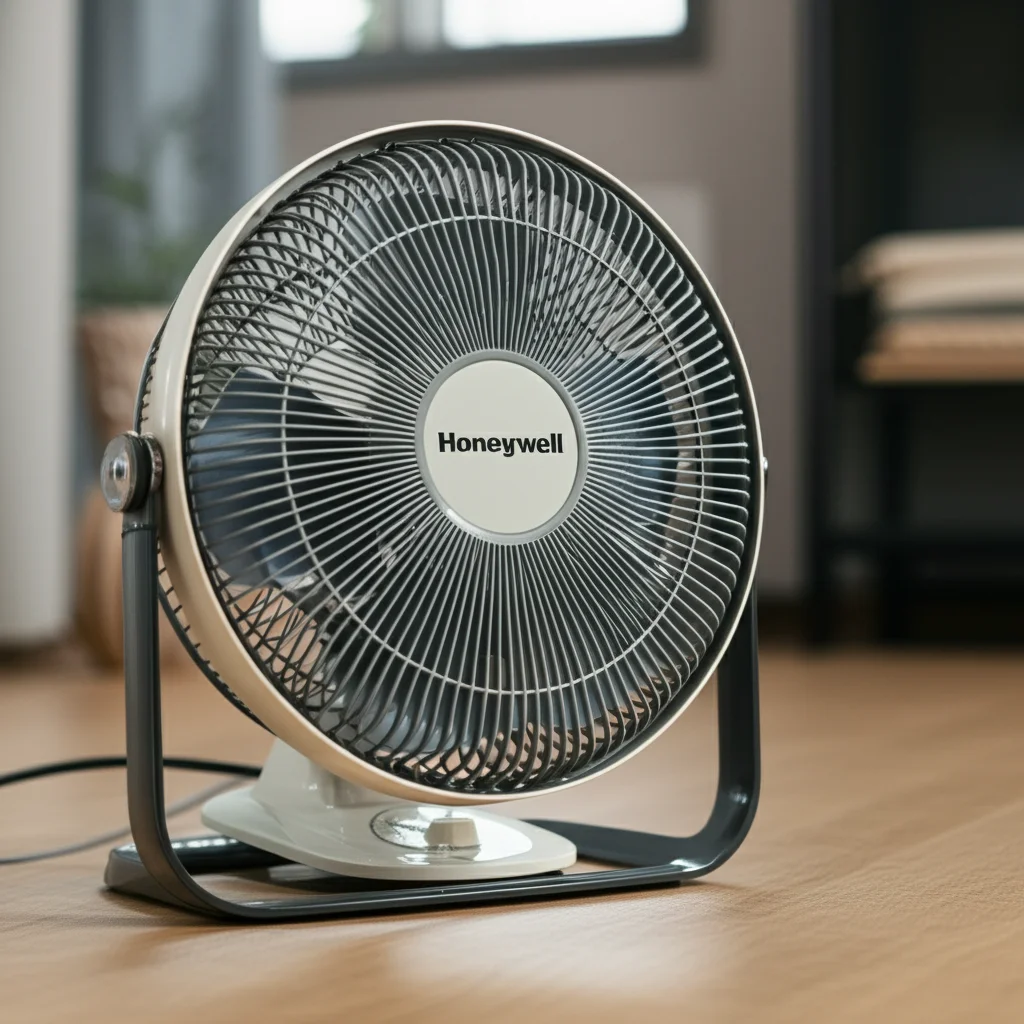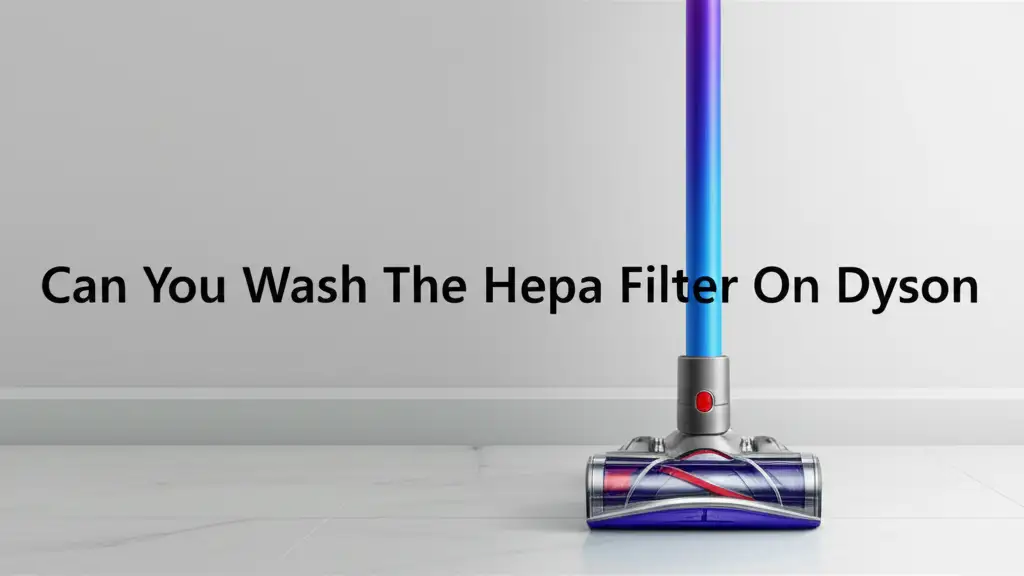· Todd Martin · Home Maintenance · 20 min read
How To Clean Air Purifier Filter
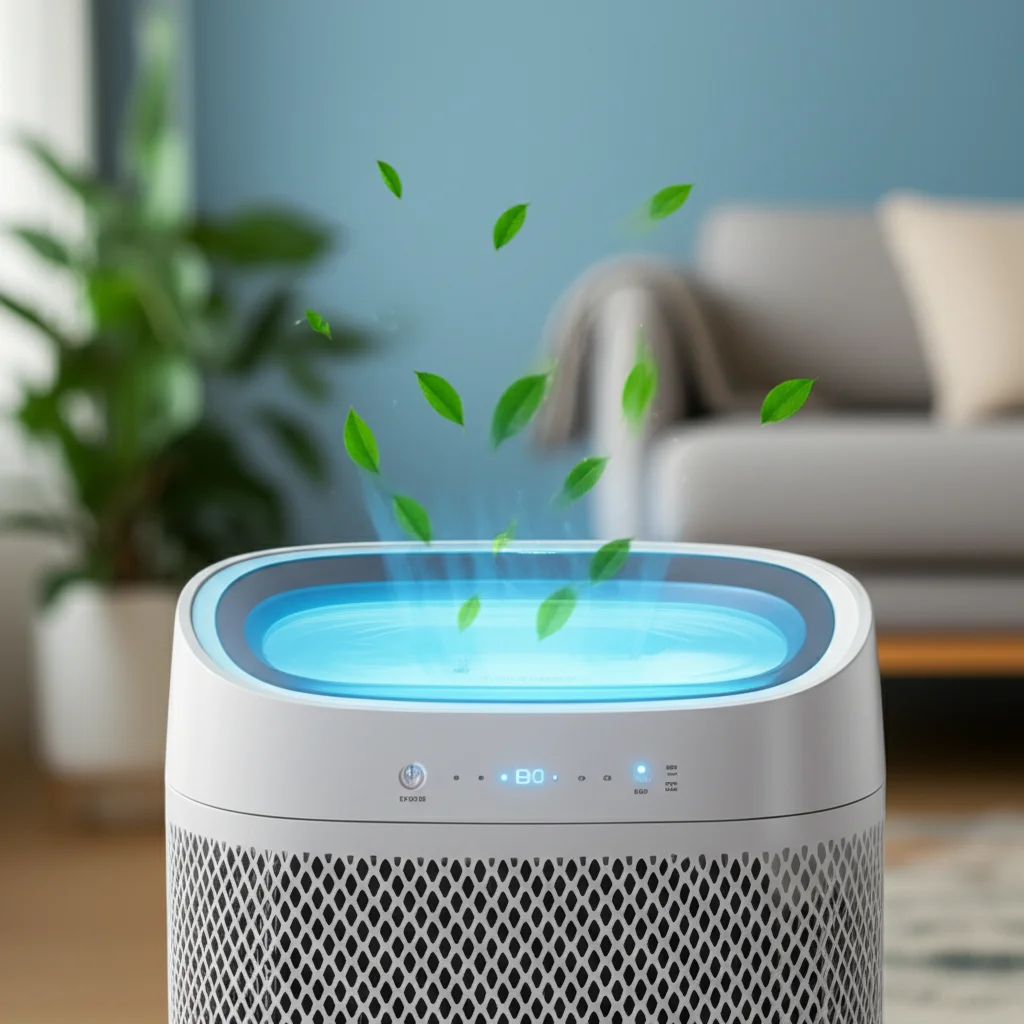
Restore Your Air: How to Clean Air Purifier Filters
Do you notice a lingering stale smell in your home, even after cleaning? Or perhaps your air purifier seems to be running constantly without much effect? The problem might be a dirty filter. An air purifier works hard to remove dust, allergens, and odors from your indoor air.
However, over time, these particles build up on the filters, reducing the unit’s efficiency. Learning how to clean air purifier filter components correctly ensures your device continues to provide clean, fresh air. It also helps extend the life of your air purifier and saves you money on replacement filters. This guide covers everything you need to know about maintaining your air purifier filters for optimal performance.
Takeaway
- Regularly clean washable pre-filters and activated carbon filters to remove dust and debris.
- Never wash HEPA filters; always replace them when they are dirty.
- Vacuum non-washable filters gently with a brush attachment to remove loose particles.
- Follow your air purifier’s specific instructions for filter maintenance and replacement.
- Clean filters every 2-4 weeks, or more often in dusty environments.
How do you clean an air purifier filter? You clean an air purifier filter by first identifying its type. Washable pre-filters can be rinsed with water and air-dried. Non-washable HEPA and activated carbon filters need gentle vacuuming to remove surface dust. Always check your unit’s manual before starting. Proper cleaning ensures your air purifier works effectively.
Understanding Your Air Purifier Filters
Air purifiers use different types of filters to capture various pollutants. Knowing which type of filter your unit has helps you clean it properly. Most air purifiers use a multi-stage filtration system. Each stage targets specific contaminants to ensure comprehensive air purification.
The most common types include pre-filters, HEPA filters, and activated carbon filters. Each filter type has a specific role in cleaning your air. Treating them correctly ensures your air purifier works efficiently.
Pre-Filters: Your First Line of Defense
Pre-filters are usually the first layer of filtration in an air purifier. They capture large particles like dust, pet hair, and lint. This initial trapping prevents these bigger particles from reaching and clogging the more sensitive filters below. Most pre-filters are washable and reusable.
These filters are often made of mesh or foam. Their primary job is to protect the other filters. Regular cleaning of the pre-filter is crucial. It extends the life of your HEPA and carbon filters significantly.
HEPA Filters: The Core of Air Purification
HEPA (High-Efficiency Particulate Air) filters are the heart of many air purifiers. They capture 99.97% of airborne particles as small as 0.3 microns. This includes pollen, mold spores, dust mites, and pet dander. True HEPA filters are essential for people with allergies or asthma.
Most HEPA filters are not washable. Washing them can damage the delicate fibers and destroy their filtering capability. You generally need to replace HEPA filters when they become dirty. Some manufacturers claim “washable HEPA,” but these are often less effective than true HEPA filters. For specific brand guidance, you might find details on how to clean a Dyson air filter or a Shark HEPA filter.
Activated Carbon Filters: Odor and Chemical removers
Activated carbon filters specialize in absorbing odors, smoke, and volatile organic compounds (VOCs). These compounds come from cleaning products, paints, and air fresheners. Carbon filters have a porous structure that traps these gaseous pollutants. This is different from particulate filters like HEPA.
Some activated carbon filters are washable, while others are not. Always check your air purifier’s manual for specific instructions. If washable, they need thorough drying before reinstallation. If not washable, they will require replacement.
Why Regular Filter Cleaning Matters
Maintaining your air purifier’s filters is more than just a chore. It is essential for ensuring your home’s air quality. Dirty filters hinder the purifier’s performance. They also shorten the lifespan of the entire unit. Regular cleaning offers many benefits for your health and your appliance.
Keeping filters clean ensures your air purifier performs its job effectively. It removes airborne pollutants efficiently. This directly contributes to a healthier indoor environment. You will notice better air and fewer allergy symptoms.
Improve Air Quality and Health
A clean filter allows your air purifier to capture pollutants efficiently. This means fewer allergens, dust, and pet dander circulate in your home. Breathing cleaner air reduces respiratory issues and allergy symptoms. It also helps prevent the spread of airborne viruses.
A dirty filter, on the other hand, cannot trap particles well. It may even release trapped particles back into the air. This makes your air quality worse, not better. Fresh, clean air is a cornerstone of a healthy home.
Extend Filter and Unit Lifespan
When filters become clogged, your air purifier has to work harder. The motor strains to pull air through the dirty media. This constant overwork can lead to premature motor wear and tear. It shortens the overall lifespan of your air purifier.
Regular cleaning, especially of washable pre-filters, lightens the load on the motor. It also protects the more expensive HEPA and carbon filters. This extends the life of these crucial components. Properly maintained filters and units last longer.
Maintain Energy Efficiency
A clogged filter restricts airflow. Your air purifier needs more power to pull air through the dirty filter. This increases its energy consumption. You might see a rise in your electricity bill.
Cleaning filters removes the obstruction. Air flows freely, and the purifier operates at its optimal efficiency. This saves energy and reduces operating costs. An efficient air purifier is a cost-effective choice for your home.
Tools and Supplies You Need for Cleaning
Gathering the right tools before you start makes the cleaning process smooth. You likely have most of these items already in your home. Having everything ready prevents interruptions. It ensures you can complete the task efficiently.
You will need a few simple supplies to clean your air purifier filter effectively. The specific tools depend on the type of filter you are cleaning. Always refer to your air purifier’s manual. This ensures you use the correct method for your specific model.
Basic Cleaning Supplies
For most washable filters, water is your primary cleaning agent. A soft brush can help dislodge stubborn dirt. For non-washable filters, a vacuum cleaner is essential.
Here is a list of common tools:
- Vacuum cleaner with a brush attachment: Ideal for gently removing dust from non-washable filters. Ensure the suction is not too strong.
- Soft brush or old toothbrush: Useful for scrubbing washable filters or gently dusting non-washable ones.
- Mild dish soap (optional): For very dirty washable filters, a small amount of mild soap can help. Make sure to rinse thoroughly.
- Clean towels or paper towels: For drying washable filters.
- Bucket or sink: For washing filters.
- Protective gloves: Recommended to avoid contact with accumulated dust and allergens.
- Dust mask: Important to prevent inhaling dust particles during the cleaning process.
Always ensure all filters are completely dry before putting them back into the unit. Moisture can lead to mold growth and damage the purifier. Drying might take several hours or even a full day. Patience is key for proper filter maintenance.
Step-by-Step Guide: Cleaning Washable Pre-Filters
Cleaning your air purifier’s washable pre-filter is a simple task. It can significantly improve your unit’s performance. This step-by-step guide helps you clean it effectively. Always ensure the air purifier is unplugged before you begin.
Regular cleaning of the pre-filter is crucial for extending the life of your HEPA and carbon filters. It prevents large debris from clogging the more delicate parts of your air purifier. I usually clean my pre-filter every two to four weeks, or more often if I notice significant dust buildup.
1. Turn Off and Unplug Your Air Purifier
Safety is the top priority. Before doing any maintenance on an electrical appliance, turn it off. Then, unplug the unit from the wall outlet. This prevents accidental activation during the cleaning process. It also protects you from any electrical hazards.
2. Access the Pre-Filter
Most air purifiers have an easily accessible filter compartment. Refer to your owner’s manual if you are unsure how to open it. Gently remove the pre-filter from its slot. Some pre-filters are separate, while others might be attached to the HEPA filter.
Be careful not to dislodge dust onto other surfaces. You can take the unit outside if you prefer. This keeps dust from spreading inside your home.
3. Shake or Vacuum Off Loose Dust
Before washing, take the pre-filter outside. Gently shake it to remove any large, loose dust and debris. For a more thorough job, use a vacuum cleaner with a brush attachment. Carefully vacuum both sides of the filter. This removes as much dry dust as possible.
This step helps prevent dust from going down your drain if you wash it indoors. It also makes the washing process easier. For comprehensive cleaning on a specific brand, you might want to look at how to clean a Honeywell air purifier as they often have washable pre-filters.
4. Wash the Filter (If Washable)
Place the pre-filter under lukewarm running water. Rinse it until the water runs clear. For stubborn dirt, you can use a small amount of mild dish soap. Gently scrub with a soft brush or your hands.
Ensure you rinse off all soap residue thoroughly. Soap can leave a film that might affect the filter’s performance. Continue rinsing until the filter looks clean.
5. Dry the Filter Completely
This is the most critical step. Shake off excess water from the filter. Lay it flat on a clean towel or hang it in a well-ventilated area. Allow it to air dry completely.
Never use a hairdryer or direct heat, as this can damage the filter material. Drying can take several hours, or even a full day, depending on humidity. Make sure it is bone dry before putting it back. Reinstalling a wet filter can lead to mold growth.
6. Reinstall the Clean Filter
Once the filter is completely dry, carefully place it back into its slot. Ensure it is seated correctly according to your purifier’s design. Close the filter compartment. Plug in your air purifier and turn it on. You should notice improved airflow and performance immediately.
Cleaning Activated Carbon Filters (If Applicable)
Activated carbon filters are great for trapping odors and gases. Their cleaning process depends on whether they are washable. Not all carbon filters are designed to be cleaned. Always check your air purifier’s manual first.
Most activated carbon filters are not washable and require replacement. Attempting to wash a non-washable carbon filter can damage it. It also renders it ineffective. If your carbon filter is washable, follow the steps below carefully.
Identifying Washable vs. Non-Washable Carbon Filters
Your air purifier’s manual is the best resource for this. Some carbon filters are integrated into a HEPA filter, making them non-washable. Standalone granular carbon filters might be washable. However, these are less common in consumer air purifiers.
If the manual states the carbon filter is washable, it will provide instructions. If not, treat it as a non-washable filter. When in doubt, assume it is not washable.
For Washable Carbon Filters: Gentle Rinse and Dry
If your manual confirms the carbon filter is washable, handle it with care. Remove it from the air purifier, similar to the pre-filter. Rinse the filter gently under lukewarm running water. Avoid using soap, as it can interfere with the carbon’s absorption properties.
Rinse until the water runs clear. Then, shake off excess water. Lay the filter flat or hang it in a well-ventilated area to air dry completely. This might take longer than a pre-filter. Ensure no moisture remains before reinstallation.
For Non-Washable Carbon Filters: Gentle Vacuuming
Most activated carbon filters are not washable. For these, cleaning means removing surface dust. Use a vacuum cleaner with a soft brush attachment. Gently vacuum both sides of the carbon filter.
This removes any large dust particles that might be clinging to the filter. Be careful not to press too hard or damage the filter media. This gentle cleaning helps maximize the filter’s lifespan between replacements. For specific brand maintenance, knowing how to clean a Coway air purifier often involves these steps for their carbon filters.
Maintaining HEPA Filters: What You Need to Know
HEPA filters are incredibly effective at capturing tiny particles. However, they are also quite delicate. Proper maintenance is vital for their performance. The most important rule for HEPA filters is: Do not wash them unless specifically stated by the manufacturer.
The fine fibers that make a HEPA filter so effective can be easily damaged by water. Washing can break down these fibers, creating gaps. This means particles can pass right through, making the filter useless. Always prioritize careful handling for HEPA filters.
Why Most HEPA Filters Are Not Washable
True HEPA filters are made of a dense mat of randomly arranged fibers. These fibers are designed to trap particles through a combination of interception, impaction, and diffusion. When you wash a HEPA filter, water can:
- Damage the fiber structure: The pressure of water can break the delicate fibers, increasing the pore size.
- Leave mineral deposits: Tap water contains minerals. These can clog the microscopic pores and reduce efficiency.
- Encourage mold growth: If not dried completely, moisture can lead to mold and mildew. This would introduce harmful spores into your air.
Manufacturers often label a filter as “washable HEPA-type” or “HEPA-like.” These filters typically do not meet the strict HEPA standards. They are usually less efficient. Always check your air purifier’s manual for specific instructions on your HEPA filter.
How to “Clean” a Non-Washable HEPA Filter
For non-washable HEPA filters, cleaning means gentle dry maintenance. This method simply removes surface dust. It does not restore the filter’s deep filtration capabilities.
- Vacuum gently: Use a vacuum cleaner with a soft brush attachment. Set the vacuum to a low suction setting. Gently vacuum both sides of the HEPA filter. Move the brush lightly over the pleats. This removes loose dust and debris that accumulates on the surface.
- Never use water or chemicals: Avoid all liquids, including cleaning solutions. These can damage the filter material.
- Do not tap or hit: Tapping or hitting the filter might seem to dislodge dust, but it can also damage the internal structure. It can release trapped particles into the air.
This gentle vacuuming extends the filter’s lifespan slightly. However, it does not replace the need for eventual replacement. For brands like Levoit air filter or Homedics air purifier filter, their HEPA filters are generally non-washable and require this gentle vacuuming technique.
Brand-Specific Filter Cleaning Considerations
While general cleaning guidelines apply, specific air purifier brands may have unique filter designs. This affects their cleaning and maintenance needs. Always consulting your product’s manual is the best practice. Some brands offer washable components, while others rely solely on replacement.
Understanding these differences helps you care for your specific unit effectively. This section highlights common considerations for popular air purifier brands. This ensures you maintain your purifier properly.
Dyson Air Purifier Filters
Dyson air purifiers often feature sealed HEPA and activated carbon filters. These are typically not designed for washing. Their filters are meant to be replaced as a single unit. Dyson recommends replacing them every 12 months, or sooner if usage is heavy.
Cleaning a Dyson filter involves gently wiping the exterior mesh or vacuuming light dust. Never attempt to wash the internal filter components. For detailed instructions specific to your Dyson model, check the manual. You might find more information specific to cleaning a Dyson air filter in other resources.
Honeywell Air Purifier Filters
Many Honeywell air purifiers use a combination of pre-filters, HEPA filters, and activated carbon pre-filters. Some Honeywell models feature washable pre-filters. These are usually foam or mesh and can be rinsed under water.
Honeywell HEPA filters are generally non-washable and require replacement. Their activated carbon pre-filters might also be washable in some models. Always refer to your specific Honeywell model’s instructions for exact cleaning procedures. Learn more about cleaning a Honeywell air purifier on their product pages.
Coway Air Purifier Filters
Coway air purifiers, like the popular Airmega series, often include a washable pre-filter. This foam filter can be easily removed and rinsed with water. This is a big advantage for routine maintenance.
Coway’s HEPA and activated carbon filters are typically not washable. They are designed for periodic replacement. The unit usually has indicator lights to alert you when these filters need changing. For more specifics on Coway maintenance, including how to clean a Coway air purifier filter, consult your manual.
Levoit Air Purifier Filters
Levoit air purifiers are popular for their compact design and effectiveness. Most Levoit models use a multi-layer filter, often including a pre-filter, True HEPA filter, and activated carbon filter. These multi-layer filters are usually combined into one unit.
This combined filter is generally not washable. Levoit recommends vacuuming the outer pre-filter layer gently to remove large debris. The entire filter assembly needs replacement every 6-8 months, depending on usage. Always check the specific instructions for your Levoit air filter model.
Shark Air Purifier Filters
Shark air purifiers also utilize multi-layered filtration systems. Similar to many other brands, their HEPA and carbon filters are typically integrated and not designed for washing. The outer mesh or pre-filter can sometimes be vacuumed.
Shark provides specific instructions for replacing their filters. They emphasize the importance of regular replacement for optimal performance. If you have a Shark air purifier filter, ensure you follow their guidance for replacement cycles.
Homedics Air Purifier Filters
Homedics air purifiers usually feature multi-stage filtration. This includes pre-filters, HEPA filters, and activated carbon filters. Depending on the model, some pre-filters might be washable.
Homedics HEPA and carbon filters typically require replacement. It is crucial to consult your specific Homedics air purifier’s manual. This ensures you understand its unique filter types and maintenance schedule. For information on cleaning a Homedics air purifier filter, always check the product documentation.
When to Replace Your Air Purifier Filters
Cleaning your air purifier filters extends their life, but it does not make them last forever. All filters eventually need replacement. Knowing when to change them is key for maintaining air quality. Ignoring replacement can lead to reduced efficiency and potential damage to your unit.
Filter lifespan varies depending on the type of filter, usage, and indoor air quality. Most manufacturers provide guidelines. However, you should also look for signs that indicate a filter needs changing.
Manufacturer Guidelines
Most air purifier manufacturers provide a recommended replacement schedule. This is usually found in your owner’s manual.
- Pre-filters: If washable, clean every 2-4 weeks. Replace if they show signs of wear, tears, or cannot be fully cleaned.
- HEPA filters: Typically need replacement every 6-12 months. Some advanced filters might last longer.
- Activated Carbon filters: Often need replacement every 6-12 months. Heavy odor environments may require more frequent changes.
These are general guidelines. Your actual replacement schedule may differ. High pollution levels, pet ownership, or smoking in the home can shorten filter life.
Signs Your Filters Need Replacement
Even if you follow the manufacturer’s schedule, your filters might need earlier replacement. Look for these common signs:
- Decreased Airflow: If the air coming out of your purifier feels weaker, the filters are likely clogged.
- Increased Noise: A straining motor due to clogged filters can cause the unit to become louder.
- Unpleasant Odors: If your air purifier starts emitting a musty or stale smell, the carbon filter is likely saturated. The HEPA filter might also have trapped organic matter.
- Visible Dirt and Discoloration: While some dust is normal, excessive gray or brown discoloration on non-washable filters means they are full.
- Filter Indicator Light: Many modern air purifiers have indicator lights. These tell you when a filter needs cleaning or replacement. Always reset the indicator after cleaning or replacing filters.
Never try to force an old, dirty filter to last longer than it should. The health benefits of clean air outweigh the cost of new filters.
Common Mistakes to Avoid When Cleaning Filters
Cleaning air purifier filters seems straightforward, but common mistakes can harm your unit. These errors reduce effectiveness or damage the filters. Avoiding these pitfalls ensures your air purifier performs its best. Proper care extends the life of your device.
Understanding what not to do is as important as knowing what to do. These mistakes can lead to costly replacements or poor air quality. Always remember safety first.
Using Water on Non-Washable Filters
This is the most common and damaging mistake. As discussed, true HEPA filters and many carbon filters are not meant for water. Water can:
- Destroy the delicate fiber structure of HEPA filters.
- Clog pores with mineral deposits from tap water.
- Promote mold and bacterial growth if not dried perfectly.
Always check your manual to confirm if a filter is washable. If unsure, assume it is not. Stick to gentle vacuuming for non-washable types.
Not Drying Washable Filters Completely
If you wash a filter, ensure it is completely, 100% dry before reinstalling it. Even slight dampness can lead to mold, mildew, or bacterial growth inside your air purifier. This contaminates your indoor air.
Air drying is the safest method. Never use heat sources like hair dryers or ovens. These can warp or damage the filter material. Patience is key for proper drying.
Using Harsh Cleaning Agents
Never use harsh chemicals, bleach, or abrasive cleaners on any air purifier filter. These substances can:
- Damage the filter material.
- Leave chemical residues that release harmful fumes into your air.
- Reduce the filter’s ability to capture pollutants.
Stick to plain water or a very mild dish soap for washable filters. Ensure thorough rinsing.
Over-cleaning or Under-cleaning
Finding the right balance is important.
- Over-cleaning: Cleaning washable filters too often, or cleaning non-washable ones too aggressively, can cause premature wear. It can also damage the filter media.
- Under-cleaning: Not cleaning washable filters frequently enough allows excessive dust buildup. This reduces airflow and strains the motor.
Follow the manufacturer’s recommendations for cleaning frequency. Adjust based on your environment’s dust levels. Listen to your unit and observe signs of reduced performance.
Not Following Manufacturer’s Instructions
Every air purifier model can have unique maintenance requirements. Ignoring the owner’s manual is a significant mistake. The manual provides specific details on:
- How to access and remove filters.
- Which filters are washable and which are not.
- Recommended cleaning methods.
- Filter replacement schedules.
Your manual is your best guide for keeping your air purifier in top condition.
FAQ Section
Q: How often should I clean my air purifier filter? A: You should clean washable pre-filters every 2-4 weeks, or more often in very dusty homes. For non-washable HEPA and carbon filters, gently vacuum them every 1-2 months. Always check your specific air purifier manual for the most accurate recommendations. Regular cleaning keeps your unit running efficiently.
Q: Can I wash a HEPA filter? A: Generally, no, you should not wash a true HEPA filter. Washing can damage its delicate fiber structure, making it ineffective at capturing tiny particles. Most HEPA filters are designed for replacement when they become dirty. Always verify your filter type in your air purifier’s manual before attempting to wash it.
Q: What happens if I don’t clean my air purifier filter? A: If you do not clean your air purifier filter, it will become clogged with dust and pollutants. This reduces airflow, makes the unit work harder, and lowers its efficiency. The air purifier may also start releasing trapped particles back into your home. This can negatively impact indoor air quality and shorten the unit’s lifespan.
Q: How do I know if my filter needs cleaning or replacement? A: You can tell your filter needs attention if airflow decreases, the unit makes more noise, or it emits unusual odors. Visually inspect the filter for heavy dust buildup or discoloration. Many modern air purifiers also have a filter indicator light that signals when cleaning or replacement is due.
Q: Can I use a vacuum cleaner on my air purifier filter? A: Yes, you can use a vacuum cleaner with a soft brush attachment on non-washable HEPA and carbon filters. Use a low suction setting and gently vacuum the surface to remove loose dust and debris. This helps to extend their life. Never vacuum washable filters that are wet, and be gentle to avoid damage.
Q: Do all air purifier filters need cleaning? A: Not all air purifier filters need cleaning. Washable pre-filters and some carbon filters can be cleaned. However, most true HEPA filters and many activated carbon filters are designed to be replaced, not cleaned. Always consult your air purifier’s manual to understand which filters are cleanable and which require replacement.
Conclusion
Maintaining your air purifier’s filters is an essential task for any homeowner. By regularly cleaning your air purifier filter, you ensure your device continues to provide clean, fresh air for your living space. This also extends the lifespan of your unit and saves you money on frequent filter replacements. Understanding the different filter types and their specific cleaning needs is important.


